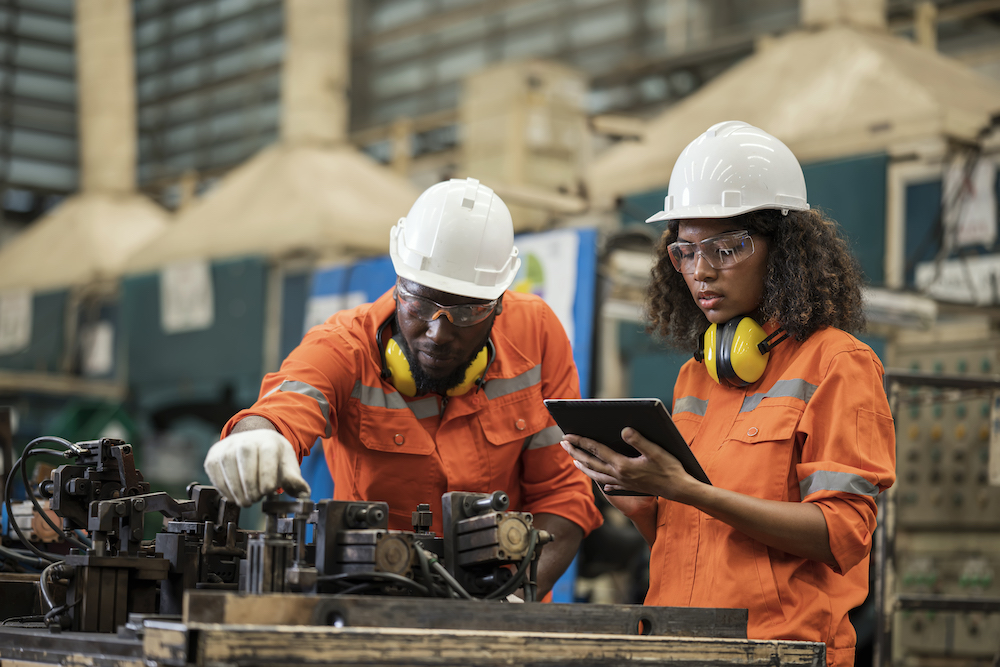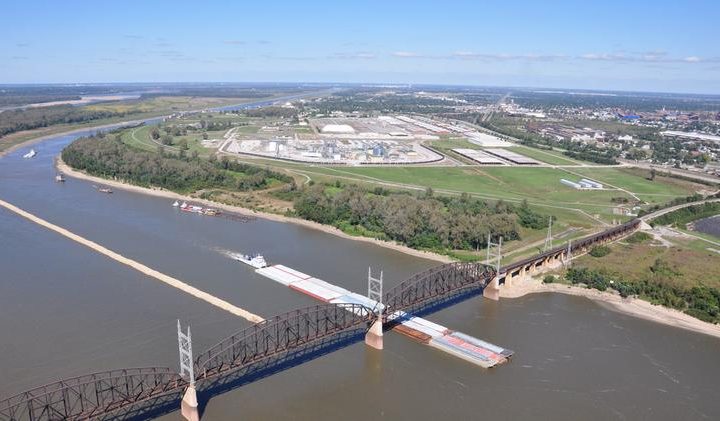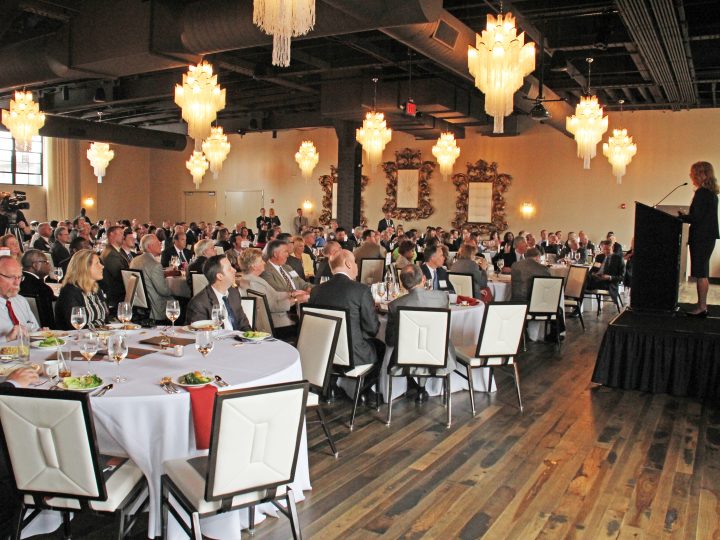
The importance of the logistics and manufacturing sectors as key drivers of the St. Louis region’s economy was front and center during FreightWeekSTL, a weeklong conference hosted in early June by the St. Louis Regional Freightway, a Bi-State Development enterprise.
With a $209 billion gross domestic product (GDP) — placing it in the top third of U.S. metro areas — the St. Louis region continues to outperform peer cities in productivity and economic growth. Contributing to that growth are an unmatched combination of workforce readiness, available industrial space and excellent multimodal infrastructure that continues to fuel the region’s position as a global leader in freight movement and industrial development.
Zeroing in on the region’s manufacturing and distribution industries, from 2020-2025, the GDP of both increased by 33%, underscoring our advantages for these vital sectors of our economy. The statistics show that the region produces higher value goods per person than peer regions across the Midwest, and they showcase the value proposition of the St. Louis region’s manufacturing and distribution workforce.
Additional analysis reveals that, over the past 10 years, for every new resident arriving in the St. Louis MSA, the overall economy added more than $2.3 million to its GDP. Workers in the St. Louis region are more productive in relation to workers in peer regions, making the bi-state area a premier location for businesses needing skilled labor proficient in the manufacturing and distribution of high-value complex goods. Recent and planned investments reinforce how these factors are drawing development to the region and paving the way for additional growth.
In the Freightway’s targeted industry sectors — Advanced Manufacturing, Chemicals, Food & AgTech, and Metals — a report released during FreightWeekSTL highlights more than $3 billion in investment that is adding almost 2,000 new jobs and helping to support the retention of hundreds more in the region. And those numbers don’t include previously reported investments in the Aerospace Manufacturing sector, which is a high-growth $5.1 billion legacy industry for the region. With 11.9% job growth over the past five years in the St. Louis region, the industry has grown at a rate that is more than 10 times faster than the national growth rate, and the job concentration in this sector is nearly four times the national average. Looking at peer cities in the Midwest, average annual wages for this sector of our economy are more than double the regional average.
In 2024, the Freightway launched the Aerospace & Aviation Task Force, a collaboration between the region’s five busiest airports, leading employers in the aerospace manufacturing and service sector, and regional leaders in education and workforce training. This cross-cutting working group provides a platform for partners to strategically elevate and grow the workforce for this critical sector within the advanced manufacturing target industry, which supports more than 338,000 total jobs in the region.
On the logistics side, Ingram Infrastructure Group is investing $50 million in the bi-state St. Louis region to expand terminal operations, enhance multimodal freight capabilities, and advance sustainability efforts. Other improvements to the region’s multimodal infrastructure are included in the recently released 2026 Priority Projects List, which includes 29 projects totaling almost $8.9 billion. Among the highlights is the new $460 million Chain of Rocks Bridge across the Mississippi River currently under construction as part of the overall $1.2 billion I-270 Improvement Project that will enhance a significant bi-state freight corridor in the region. The list also includes the new $3 billion consolidated terminal at St. Louis Lambert International Airport (STL), and more than $1.18 billion in improvements to Interstate 70 – including $175 million to enhance the segment serving STL that are currently unfunded but one of our highest priorities.
The priority projects are identified by the St. Louis Regional Freightway’s Freight Development Committee. The committee includes representatives from IDOT, MoDOT, East-West Gateway Council of Governments, all modes of transportation, the manufacturing and logistics industries, and academia — all working collaboratively through a process that has been nationally recognized for its effectiveness. This bi-state collaboration is critical to the region’s success in advancing some of our highest priority infrastructure projects.
While FreightWeekSTL spotlights the bi-state St. Louis area each spring, we remain committed to continuing to promote the region’s strategic locational and multimodal advantages year round. Those advantages are attracting transformative investments that are advancing our region, and the potential for additional growth is something we should all be excited about. The St. Louis region is not just a participant in the global freight economy —we are a driving force.
Mary Lamie is Executive Vice President of Multimodal Enterprises for Bi-State Development and head of its St. Louis Regional Freightway enterprise.




